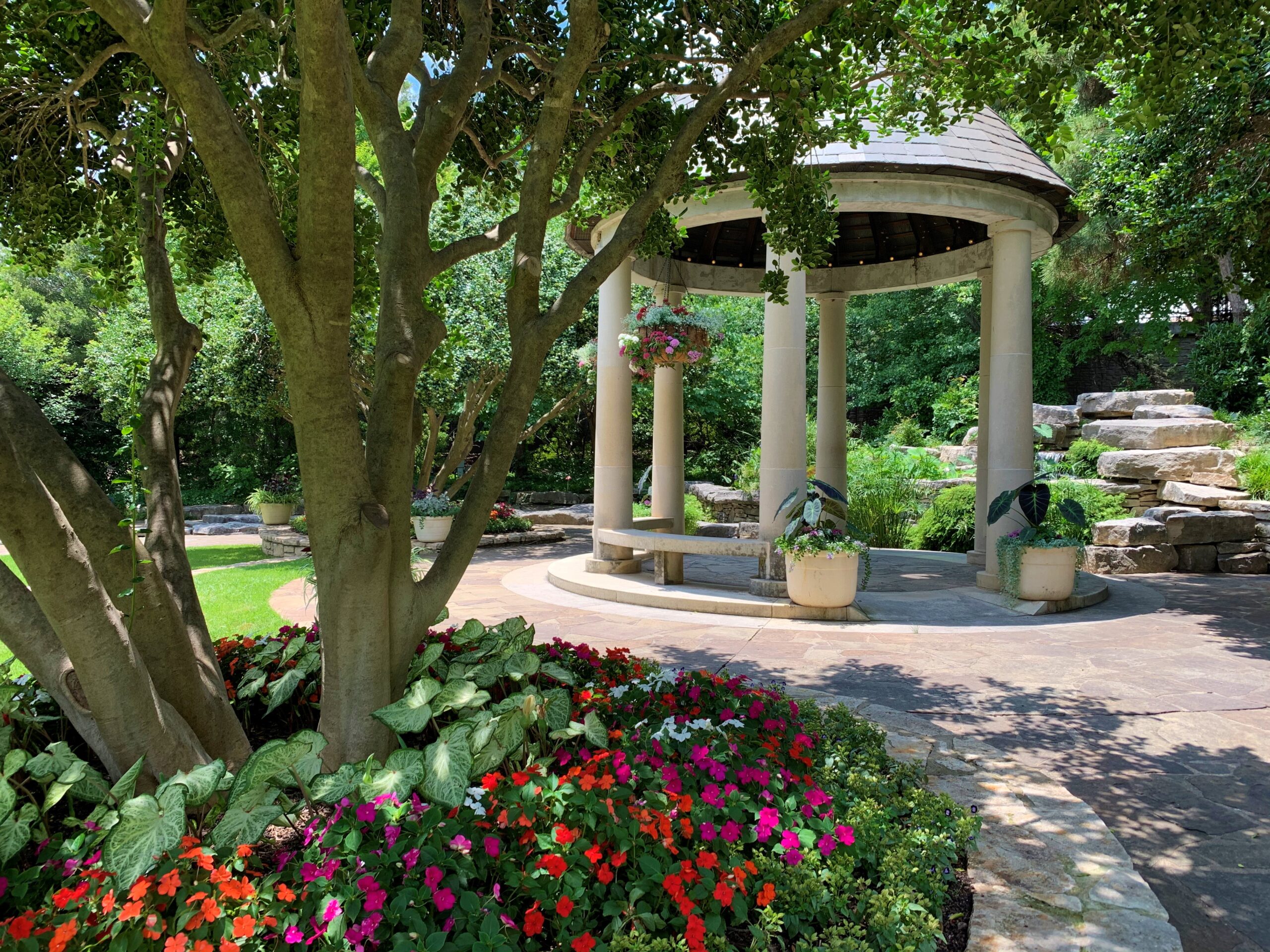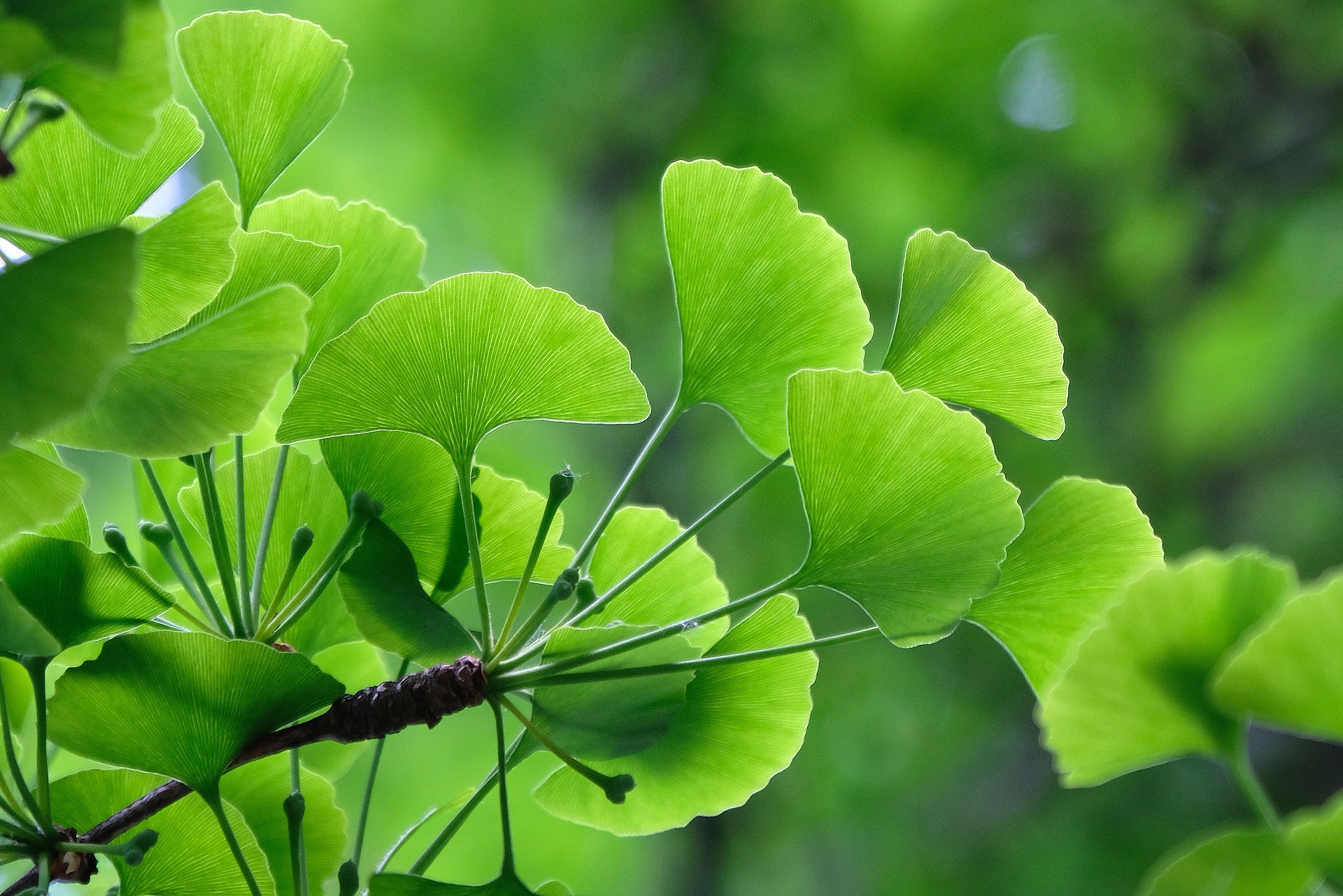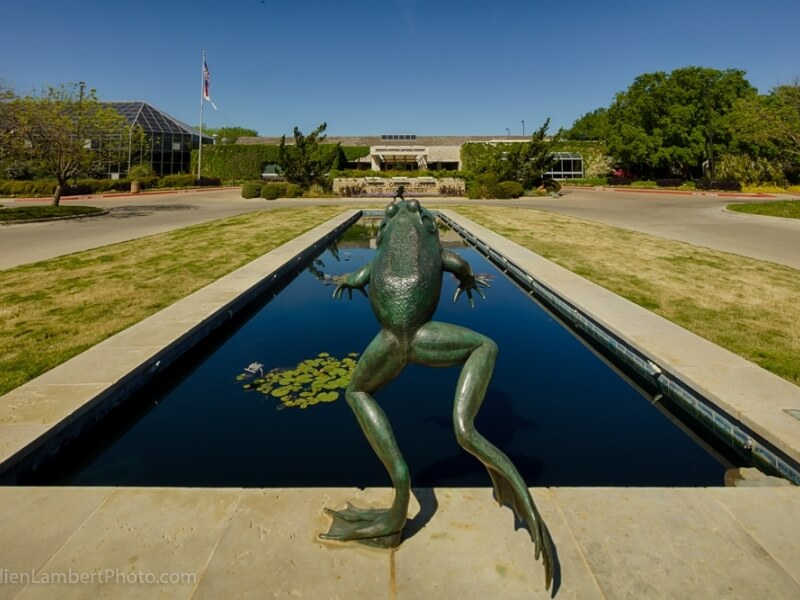Botanical Adventures Await
Check out our full calendar

Member Orientation & Tour
Curious about your FWBG membership benefits or the exciting events on the horizon? Join us for our quarterly Member Orientation—a welcoming session designed for both new and renewing members. The orientation includes a brief presentation on Garden history, membership perks, and upcoming events, followed by a guided tour of the beautiful Fuller Garden. Presentation...
- events
- family-friendly events
- free for members
- members-only events
-
Date
May 24, 2025
- Time 10:00 AM - 11:30 AM
- Location Garden Center

Birding with Fort Worth Audubon Society
Join us, along with our partners from the Fort Worth Audubon Society, for an engaging exploration of our feathered friends in their natural habitat! The experience begins with a quick introduction to essential birding gear, followed by a guided walk through the Garden’s scenic trails and pathways. Along the way, you’ll learn to identify birds...
- adult education classes
- classes
- ecology classes
- learn
-
Date
May 24, 2025
- Time 8:00 AM - 9:30 AM

Gentle Yoga: June
Registration includes a series of 4 sessions: Wednesdays, June 4, 11, 18 and 25 (9:00-10:00 AM) Registration closes June 1. Experience the joy of movement and discover the balance of flexibility, strength, and mindfulness in our all-level yoga class series. Perfect for beginners and seasoned practitioners alike, these four guided sessions will help you stretch...
- adult education classes
- classes
- health & wellness
- learn
-
Jun 4, 11, 18, & 25, 20259:00 AM - 10:00 AM
- Location Botanical Research Institute of Texas

Bella’s Book and Nature Club: June
Click here to register now! Children 18 months to 5 years and their families are invited to join Bella the Begonia at BRIT on the first Wednesday of each month. We’ll discuss nature, read a story, sing and move, plus a family nature challenge! Registration for this program is by family rather than participant and...
- children & family programs
- free for members
- learn
-
Date
Jun 4, 2025
- Time 10:30 AM - 11:30 AM
- Location Botanical Research Institute of Texas

Learning Herbs: Hibiscus
Join us for a relaxing evening exploring the wonders of a featured herb! In a casual, interactive setting, our expert instructor will share the herb’s unique properties, uses, and tips for growing it at home. Each session includes a flavorful herbal drink, a snack, and a hands-on activity like crafting or creating a recipe featuring...
- adult education classes
- classes
- health & wellness
- horticulture & gardening classes
- learn
-
Date
Jun 6, 2025
- Time 6:00 PM - 8:00 PM
- Location Botanical Research Institute of Texas

Begonia Terrariums: Next Steps
Take home a piece of the Fort Worth Botanic Garden by creating a unique terrarium featuring begonias from the largest recognized begonia collection in North America! Start with a tour of the begonia collection to learn about this fascinating genus, then learn from begonia experts how to design, grow, and care for your handcrafted terrarium. All materials...
- adult education classes
- classes
- creative arts classes
- horticulture & gardening classes
- learn
-
Date
Jun 7, 2025
- Time 9:00 AM - 11:00 AM

Drawing in the Garden: Water Conservation Garden
Discover and polish your drawing skills at the Garden! Bring your favorite portable medium and explore a new artistic focus each month. Our award-winning artist instructor will start with a demonstration, then answer questions and provide tips and one-on-one attention throughout a free-drawing session. We will end by gathering to share our experiences and drawings. Registration includes Garden admission for the day—we encourage you to explore the Garden after class!
- adult education classes
- classes
- creative arts classes
- learn
-
Date
Jun 7, 2025
- Time 9:00 AM - 11:00 AM

Good4u: Nutrition 101
Join the Garden and our partner, Natural Grocers, for an engaging exploration of health and earth-conscious living. Our free Good4u classes cover a range of valuable topics designed to inspire and empower. While registration isn’t required, it’s highly recommended to help us deliver an exceptional experience. In our Nutrition 101 class, you’ll gain essential...
- adult education classes
- classes
- health & wellness
- learn
-
Date
Jun 10, 2025
- Time 6:00 PM - 7:00 PM
- Location Botanical Research Institute of Texas

Discover Forest Bathing: June
Forest Bathing, or shinrin-yoku, is the deliberate practice of immersion in nature using mindfulness and the senses. This practice originated in Japan and allows the body, mind and spirit to relax and rejuvenate surrounded by the healing powers of nature. This introductory class begins by discussing the guiding principles of shinrin-yoku that enable us to...
- adult education classes
- classes
- learn
- wellness activities
-
Date
Jun 14, 2025
- Time 9:00 AM - 10:30 AM
- Location Japanese Garden

Dog Days: June
This weekend is bound to be a doggone good time! Enjoy two full days of hanging out with your pup in the beauty of the Garden on June 14-15. Dog Days will be held during regular Garden hours (8 a.m. – 6 p.m.), with regular admission for humans and an additional $5 per dog. Hydration...
- dog-friendly events
- events
- family-friendly events
- free for members
-
Date
Jun 14 - 15, 2025
- Time All Day

Growing Microgreens
Start a miniature indoor garden to grow vibrant, nutrient-rich microgreens with ease. In this introductory class, you will explore the benefits of microgreens, learn step-by-step growing techniques, taste-test some popular varieties, and start a tray of greens to take home. With hands-on practice and expert tips from a professional horticulturist, this class will equip you...
- adult education classes
- classes
- health & wellness
- horticulture & gardening classes
- learn
-
Date
Jun 14, 2025
- Time 10:00 AM - 12:00 PM

BRIT Reads Book Club: Becoming Earth by Ferris Jabr
Do you love to read? Are you passionate about botany, natural history, sustainability and similar topics? Then, you’ll love the BRIT Reads Book Club! This informal group meets every other month to discuss a chosen book, in-person or online. We begin with a moderator summarizing the book and reviewing its key points. Then there is...
- learn
- lectures & talks
-
Date
Jun 16, 2025
- Time 12:00 PM - 1:00 PM
- Location In Person & Online

Creative Explorations: Botanical Fan-Making
Explore new artistic media and techniques through plant-based projects with a fun and inspiring local artist. These monthly classes are appropriate for all experience levels and promote enjoyment over perfection. Reawaken your creative spirit with our instructor’s open-ended, judgment-free approach to art! Registration includes Garden admission for the day—we encourage you to explore the Garden...
- adult education classes
- classes
- creative arts classes
- learn
-
Date
Jun 17, 2025
- Time 6:00 PM - 8:00 PM
- Location Botanical Research Institute of Texas

Little Sprouts Book and Garden Club: June
Families with children aged 18 months to 5 years are invited to join Carlos the Cactus in the Backyard Vegetable Garden on the third Tuesday of every month. Together, we’ll explore nature, enjoy a story, sing songs, move, and take on an exciting family nature challenge! Registration is per family, not per individual, and includes...
- children & family programs
- learn
-
Date
Jun 17, 2025
- Time 10:30 AM - 11:30 AM
- Location Backyard Vegetable Garden

Free Admission Day: Juneteenth
Join us at the Fort Worth Botanic Garden on Wednesday, June 19 for a special Free Admission Day in honor of Juneteenth. Stroll through our beautiful gardens, connect with nature, and take time to honor the significance of this historic day. Whether it’s your first visit or your fiftieth, we invite everyone to enjoy the...
- events
- free admission days
-
Date
Jun 19, 2025
- Time All Day

Gentle Yoga: July
Registration includes a series of 4 sessions: Wednesdays, July 2, 9, 16 and 23 (9:00-10:00 AM) Registration closes June 29. Experience the joy of movement and discover the balance of flexibility, strength, and mindfulness in our all-level yoga class series. Perfect for beginners and seasoned practitioners alike, these four guided sessions will help you...
- adult education classes
- classes
- health & wellness
- learn
-
Jul 2, 9, 16, & 23, 20259:00 AM - 10:00 AM
- Location Botanical Research Institute of Texas

S.E.E.D. Camp: Eco Artists
Campers will explore the Fort Worth Botanic Garden and Botanical Research Institute of Texas through hands-on activities about conservation, art, and sustainability. Each day includes eco-friendly crafts with upcycled materials, nature-inspired sculptures, and fun techniques like paper-making and plant-based painting. With a mix of art, science, and fun, this camp fosters creativity, curiosity, and a...
- camps
- children & family programs
- learn
-
Date
Jul 7 - 11, 2025
- Time 9:00 AM - 3:00 PM

Good4u: Dinner More Veggies Please!!
Join the Garden and our partner, Natural Grocers, for an engaging exploration of health and earth-conscious living. Our free Good4u classes cover a range of valuable topics designed to inspire and empower. While registration isn’t required, it’s highly recommended to help us deliver an exceptional experience. During this class, you’ll discover how to eat...
- adult education classes
- classes
- health & wellness
- learn
-
Date
Jul 8, 2025
- Time 6:00 PM - 7:00 PM
- Location Botanical Research Institute of Texas

Discover Forest Bathing: July
Forest Bathing, or shinrin-yoku, is the deliberate practice of immersion in nature using mindfulness and the senses. This practice originated in Japan and allows the body, mind and spirit to relax and rejuvenate surrounded by the healing powers of nature. This introductory class begins by discussing the guiding principles of shinrin-yoku that enable us to...
- adult education classes
- classes
- health & wellness
- learn
-
Date
Jul 12, 2025
- Time 9:00 AM - 10:30 AM
- Location Japanese Garden

Dog Days: July
This weekend is bound to be a doggone good time! Enjoy two full days of hanging out with your pup in the beauty of the Garden on July 12-13. Dog Days will be held during regular hours ( 8 a.m. – 6 p.m.), on each of these days, with general admission for humans and an...
- dog-friendly events
- events
- family-friendly events
- free for members
-
Date
Jul 12 - 13, 2025
- Time All Day

Dog Days: August
This weekend is bound to be a doggone good time! Enjoy two full days of hanging out with your pup in the beauty of the Garden on August 9-10. Dog Days will be held during regular garden hours (8 a.m. – 6 p.m.) on each of these days, and is regular admission for humans and...
- dog-friendly events
- events
- family-friendly events
- free for members
-
Date
Aug 9 - 10, 2025
- Time All Day

Bella’s Book and Nature Club: September
Click here to register now! Children 18 months to 5 years and their families are invited to join Bella the Begonia at BRIT on the first Wednesday of each month. We’ll discuss nature, read a story, sing and move, plus a family nature challenge! Registration for this program is by family rather than participant and...
- children & family programs
- free for members
- learn
-
Date
Sep 3, 2025
- Time 10:30 AM - 11:30 AM
- Location Botanical Research Institute of Texas

Musical Swings
This fall, join us at the Garden and swing the day away with the Musical Swings exhibit! Designed to foster human connections in public spaces, this interactive installation invites people of all ages to create music together simply by swinging. Created by the award-winning art and design studio Daily tous les jours, each swing triggers notes from different...
- exhibits
- garden exhibits
-
Date
Sep 13 - Dec 8, 2025
- Time All Day

Dog Days: September
This weekend is bound to be a doggone good time! Enjoy two full days of hanging out with your pup in the beauty of the Garden on September 13-14. Dog Days will be held 8 – 6 p.m. on each of these days and is regular admission for humans and an additional $5 per dog....
- dog-friendly events
- events
- family-friendly events
- free for members
-
Date
Sep 13 - 14, 2025
- Time All Day

Free Admission Day: ¡Celebramos! Kick-Off
Celebrate the start of ¡Celebramos! with a Free Admission Day at the Fort Worth Botanic Garden! On Saturday, September 13, enjoy complimentary access to our lush 120-acre campus as we kick off this vibrant celebration of Hispanic heritage, culture, and community. Wander through the gardens, explore seasonal displays, and experience the beauty of nature while...
- events
- free admission days
-
Date
Sep 13, 2025
- Time All Day

Bella’s Book and Nature Club: October
Click here to register now! Children 18 months to 5 years and their families are invited to join Bella the Begonia at BRIT on the first Wednesday of each month. We’ll discuss nature, read a story, sing and move, plus a family nature challenge! Registration for this program is by family rather than participant and...
- children & family programs
- free for members
- learn
-
Date
Oct 1, 2025
- Time 10:30 AM - 11:30 AM
- Location Botanical Research Institute of Texas

Early Childhood Impact Series
Expand your science inquiry and outdoor learning skills as an Early Childhood Educator! This Impact Series brings together engaging guest speakers and interactive breakout sessions to deepen your understanding of environmental STEM and outdoor education tailored for young learners. Here’s what you can look forward to: What You’ll Gain: Collaborate with fellow local educators to...
- educator professional development
- learn
- school programs
-
Oct 4, Nov 15, Feb 7, May 2

Dog Days: October
This weekend is bound to be a doggone good time! Enjoy two full days of hanging out with your pup in the beauty of the Garden on October 11-12. Dog Days will be held during regular Garden hours (8 a.m. – 5 p.m.), with regular admission for humans and an additional $5 per dog. Hydration...
- dog-friendly events
- events
- family-friendly events
- free for members
-
Date
Oct 11 - 12, 2025
- Time All Day

Bella’s Book and Nature Club: November
Click here to register now! Children 18 months to 5 years and their families are invited to join Bella the Begonia at BRIT on the first Wednesday of each month. We’ll discuss nature, read a story, sing and move, plus a family nature challenge! Registration for this program is by family rather than participant and...
- children & family programs
- free for members
- learn
-
Date
Nov 5, 2025
- Time 10:30 AM - 11:30 AM
- Location Botanical Research Institute of Texas

Dog Days: November
This weekend is bound to be a doggone good time! Enjoy two full days of hanging out with your pup in the beauty of the Garden on November 8-9. Dog Days will be held during regular Garden hours (8 a.m. – 5 p.m.), with regular admission for humans and an additional $5 per dog. Hydration...
- dog-friendly events
- events
- family-friendly events
- free for members
-
Date
Nov 8 - 9, 2025
- Time All Day

Free Admission Day: Veteran’s Day
Spend Veterans Day at the Fort Worth Botanic Garden with free entry for all visitors on Tuesday, November 11. Whether you’re honoring a loved one or enjoying a peaceful day out, we invite you to explore the Garden’s seasonal beauty as a tribute to those who have served. Take a peaceful stroll through the Garden’s...
- events
- free admission days
-
Date
Nov 11, 2025
- Time All Day

Dog Days: December
This weekend is bound to be a doggone good time! Enjoy two full days of hanging out with your pup in the beauty of the Garden on December 13-14. Dog Days will be held during regular Garden hours (8 a.m. – 5 p.m.), with regular admission for humans and an additional $5 per dog. Hydration...
- dog-friendly events
- events
- family-friendly events
- free for members
-
Date
Dec 13 - 14, 2025
- Time All Day


